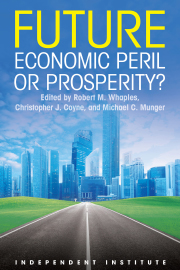California faces a firestorm, not just on fires, but also on energy. The state government continues to push households to electrify while, at the same time, electricity prices skyrocket. The dual impact of increasing dependence on electricity and a 35 to 45% boost in electric bills since 2020 is particularly hard on poor families. Already squeezed, Californians now pay the highest gasoline prices in the country, ranging from 30 to 50% above the national average. Inflicting more pain at the pump is California’s Air Resources Board (CARB). While they may be well-intentioned, the Board’s Low-Carbon Fuel Standards (LCFS) disproportionately hurt poor households because these households spend over 11% of their income (not including some government benefits) on gasoline.
CARB’s stated mission is “to promote...public health...through [the] effective reduction of air pollutants...recognizing and considering effects on the economy.” (italics added) As “the lead agency for climate change programs” it’s also responsible for the State’s goal to achieve carbon neutrality by 2045. To achieve these goals the Board wants to speed up the shift to electric vehicles.
CARB claims that its restrictive fuel standards will lead to a 90% reduction in carbon intensity of transportation fuels by 2045. It expects these efforts to eliminate over 500 million metric tons of CO2 emissions. That sounds impressive—until you look at data from China. The projected cumulative California emission reductions over this 20-year period amount to only two weeks (less than 5%) of China’s annual emissions. Sadly, California fires in 2020 wiped out all progress on carbon dioxide reduction over the previous 17 years. The current fires will likely wipe out a substantial amount of progress since 2020.
Although CARB claims that its LCFS decisions contribute to “clean air improvements that bring public health and climate benefits to California’s communities,” it offers no hard, or even semi-hard, data on these benefits. Moreover, it provides no data on current or future costs of achieving any specific health or climate target. Worse still, it ignores the disparate impact on low-income communities of increasing energy poverty. What happened to its mandate of “recognizing and considering effects on the economy.” Oops.
The absence of careful economic analysis to identify unintended consequences of CARB’s decisions partly derives from the selection process used by the Governor to appoint 12 of the 14 voting members. Environmental credentials are essential, but economic expertise, or even basic economic understanding, is optional. The other two voting members (one each appointed by the State Senate and Assembly) represent “environmental justice communities.” This makes it nearly impossible for the Board to recognize when diminishing returns to increased fuel standards no longer justify inflating gas prices that punish the poor and, indeed, punish us all. Absent hard data, the question remains: Do projected future environmental benefits of CARB’s decisions justify higher electricity prices and growing energy poverty in California’s most vulnerable communities? The answer appears to be no.










